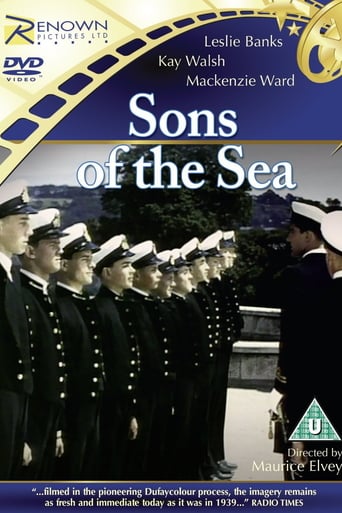

I'm writing this (my first contribution to IMDb) after as long weekend in the locale where the film was shot. Can't say that I recognised Plymouth in the film, nor Brixham (as one or two others claim to have done)but several other settings were familiar, not least the little tower (now sadly dilapidated) where the commander embarks in the boat. The modern telephone directory lists two "Tradesmen's Arms" pubs locally (an inn of than name featured as a backdrop) but I didn't have a chance to check these out.I thought the plot creaked terribly and some of the acting was poor. It wasn't too clear whether the film was set in the war or in peacetime, but I've found out that production was announced in July 1939, with the premiere held the following March, so I guess that the plot was tweaked a bit as production continued, with the patriotic closing shots contributing to some flag-waving. When the enemy spy is finally unveiled he seemed very cheerful considering he would be facing the death penalty
... View MoreI stumbled across this film while flicking through the TV channels this morning, the BBC were giving it an airing on BBC2. I'll be honest I was about to move on as the acting struck me as pretty dreadful when the scene changed to an outdoor shot of Portsmouth like I'd never seen it before. Period cars in new condition and vibrant colour!I'd thought from the indoor scene that first on that this was some 1950s film and was shocked to discover that it was a colour film made in 1939! Looked up the details on the IMDb here and was fascinated to learn about the film's unique history.It's a shame that the story and the acting is not better, but for curiosity value alone this film is worth digging out. The colour has lasted very well and it provides an invaluable record of an England that no longer exists.
... View MoreI first saw "Sons Of The Sea" during the war (circa "40/41) in Victoria and was struck by the vibrant color of the film. The story line was not memorable and I completely forgot what the story was about. The only actor who's name I remember was Leslie Banks. (That may have been partly because I associated him with the FIRST color film made in the UK, "Wings Of The Morning". (I was about 15 at the time.) In later years, as I became more involved in film (working in television and later in the National Film Board of Canada, in distribution), I kept looking for some mention of this title, but to no avail. I happened to mention to my son, just the other day, about this title, since we had been discussing "Wings..", its' color and its' female lead, Annabella. Today, he called me in to my computer, where he had located IMDb on the Internet, and there was my long lost film! I'm so happy to have found it again and learn more about ITS' history, from then to now. Has a DVD been released of this film? ..or a VHS tape (NTSC!) I'll be back to check soon. Thanks again for finding me!
... View MoreThe real star of this film (as it was in 1939), isn't an actor, but the then new Dufaycolor - full colour process. It is also possibly the first feature film to be shot using a single color negative (in contrast to the three b/w negatives needed for the three-strip Technicolor camera). In the case of Dufaycolor, the negative film was ruled with a mosaic of very fine red/green/blue lines. This is important to know when this film is viewed today as the colour is completely different from Technicolor. Because the film was shot with a conventional b/w camera, the restrictions of the bulky three-strip camera freed. This makes for some smooth, nimble camerawork. As a bonus, there are a good deal of clear, bright outdoor shots, the result of much filming around the cool blue seas and hamlets that stretch and cover the South coast of England. A landscape about to be changed by the approaching War. Even this film is intended to be a 'flagwaver' and a nod to Admiral Nelson is given in the final sequence. This is because, in this case, the Navy is honoured, including the Naval training college. The storyline is sadly, a conventional spy story. This is given depth by the always excellent Leslie Banks and the welcome appearance of Cecil Parker. The colour consultant on the film was the British colour film expert Adrian Clyne. He had good concepts for the way progressive colour films should look (which sharply differed with that of Technicolor's Natalie Kalmus). Even after 60 years, Clyne's composition is modern and vibrant. If Kalmus wanted pastels in 30s Technicolor, Clyne wanted effective colour compositions and wasn't afraid to use colour dramatically, but without the need to detract from the drama. In all, the film is an interesting experiment. No other Dufaycolor films were made. War shortages sealed the fate of this process. Viewed today, the drama is only average and anyone expecting a good spy story may be disappointed, however if looked at from the point of view as one of the few 1930s British films in colour (which has survived well) it is stunning.
... View More